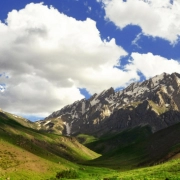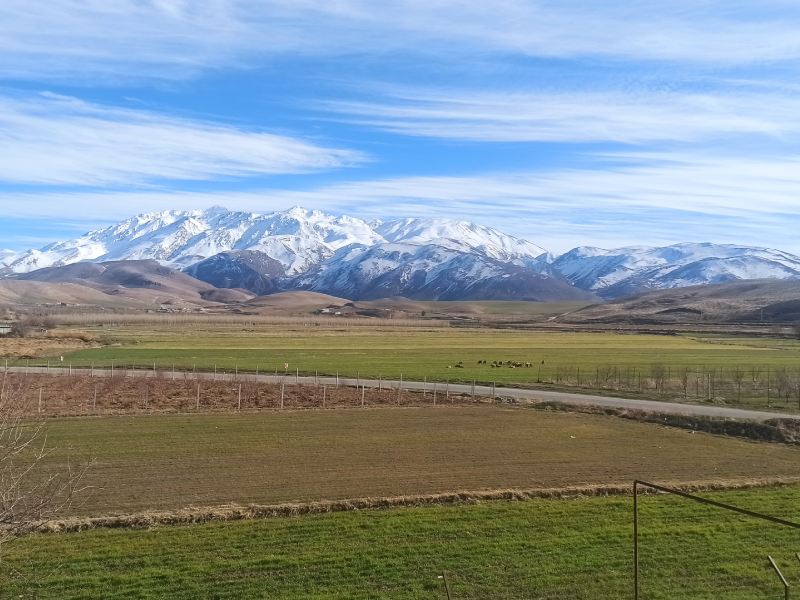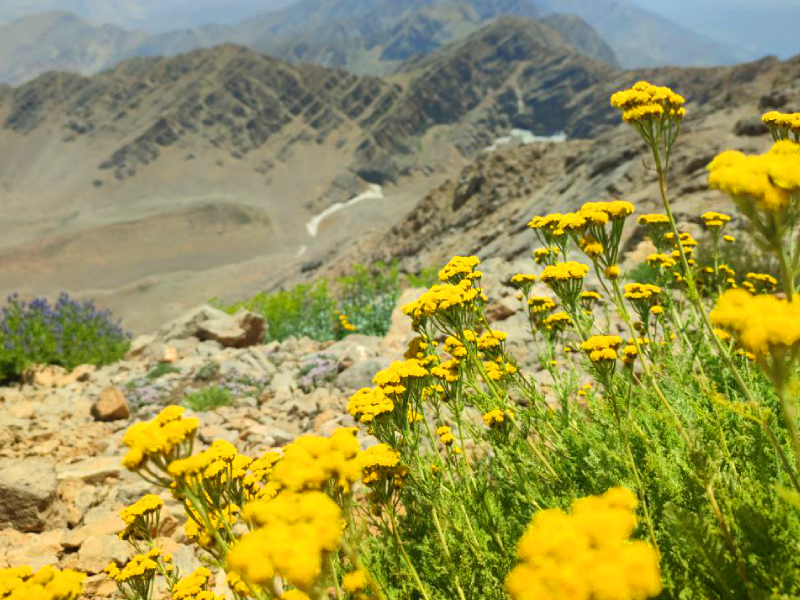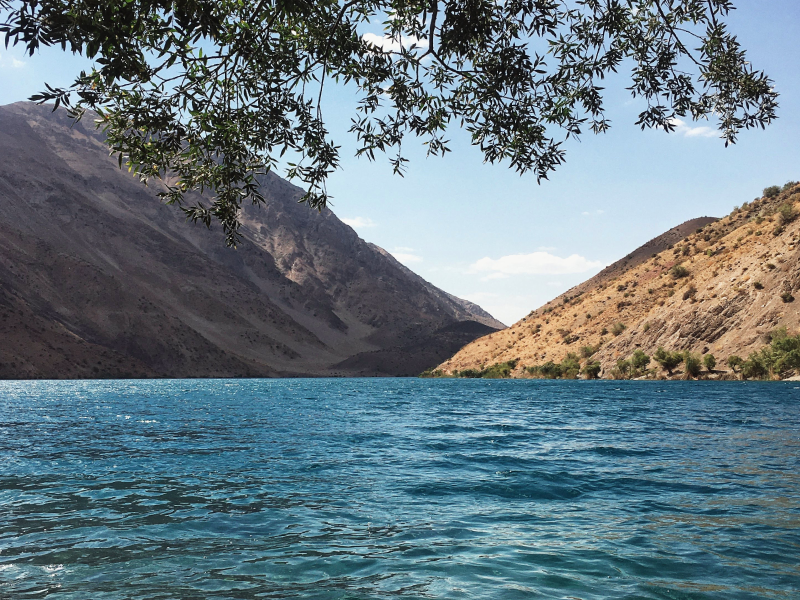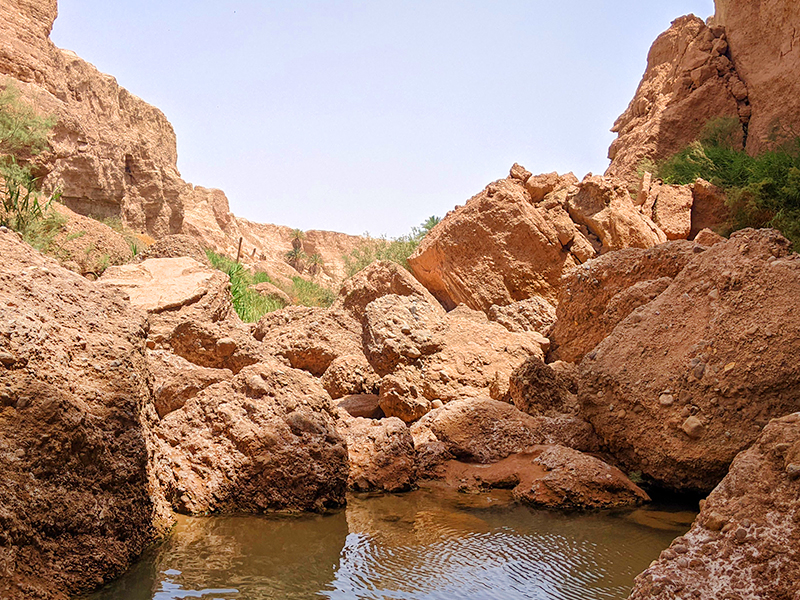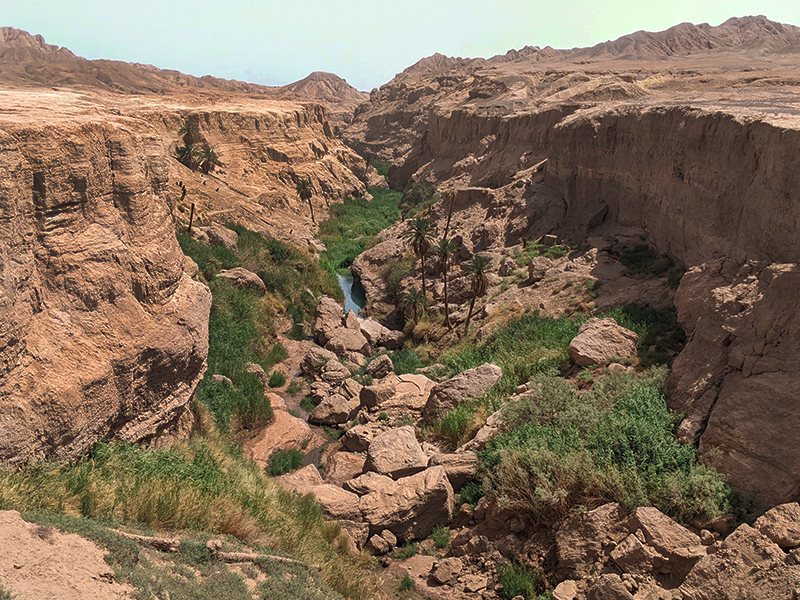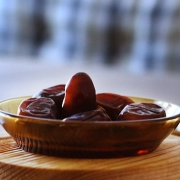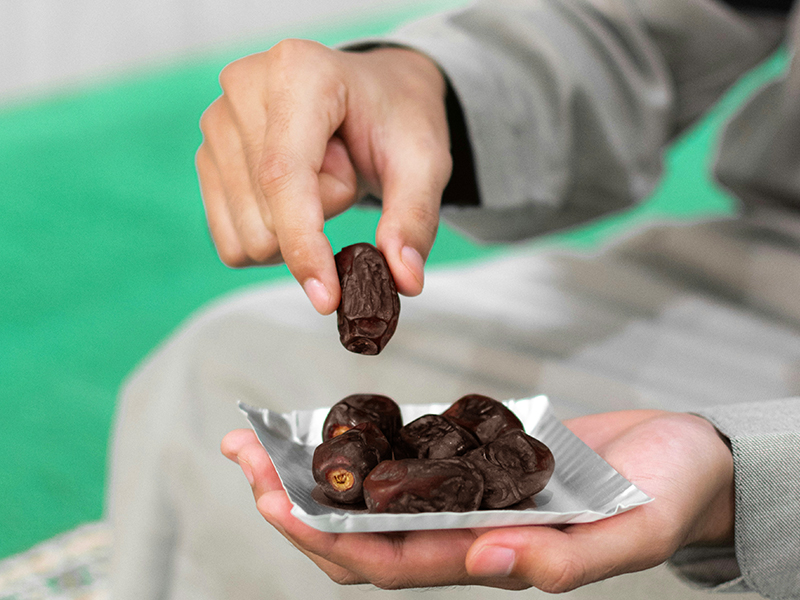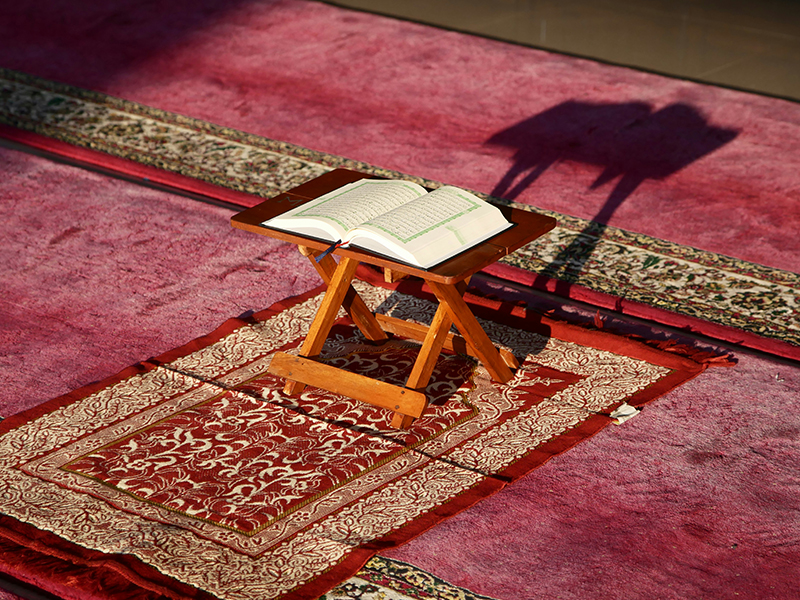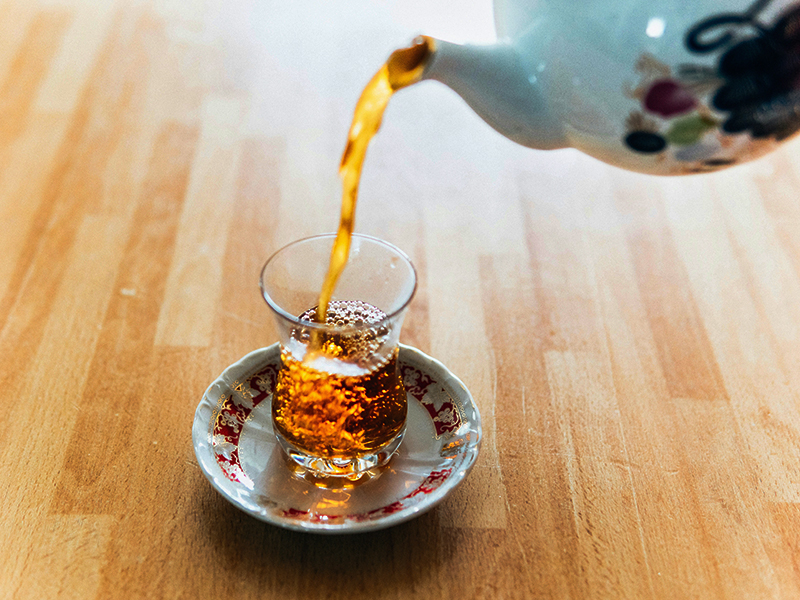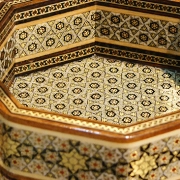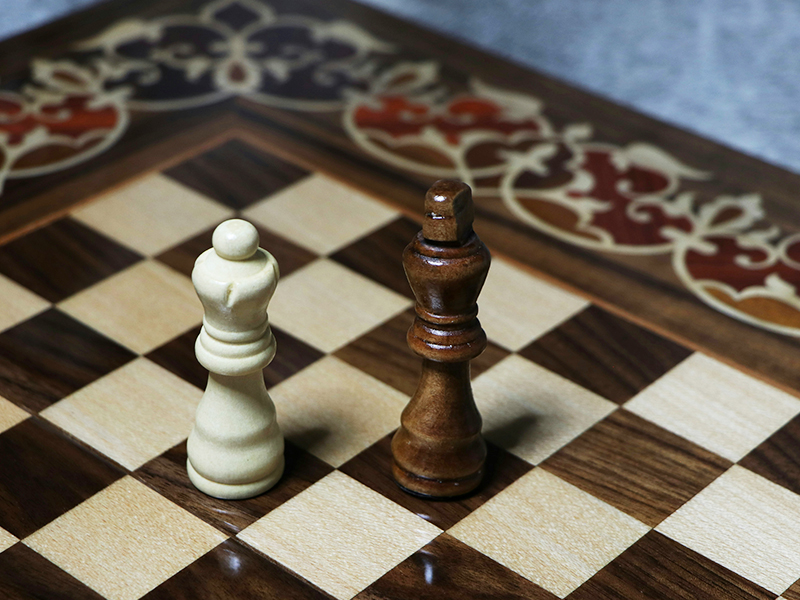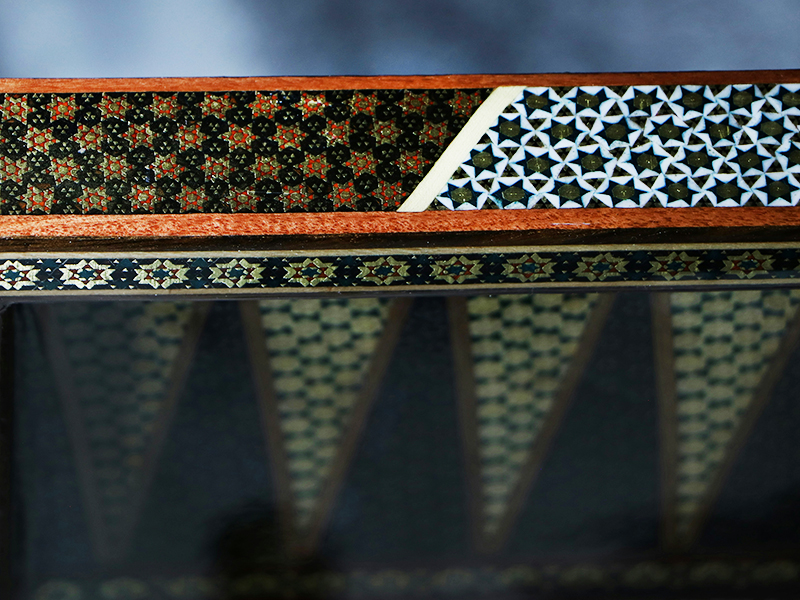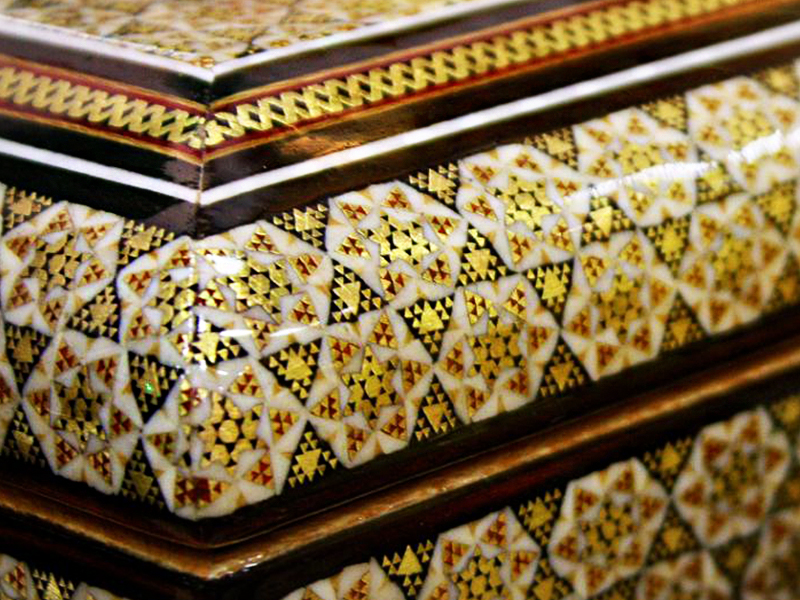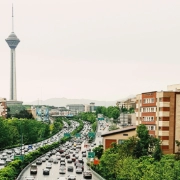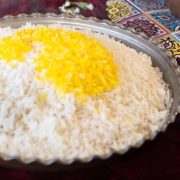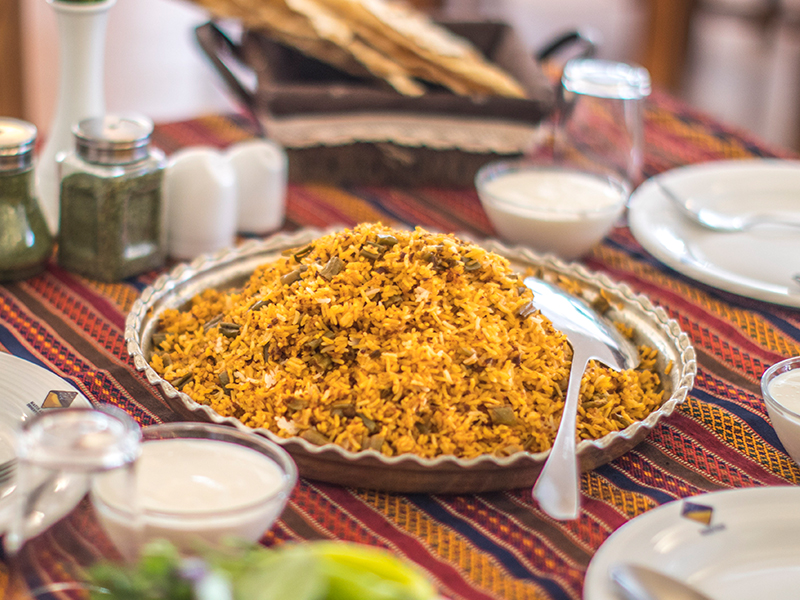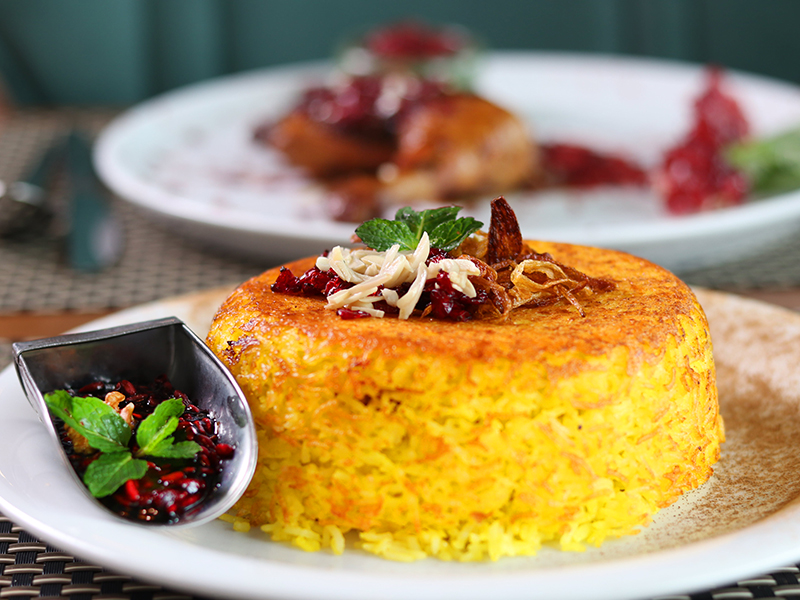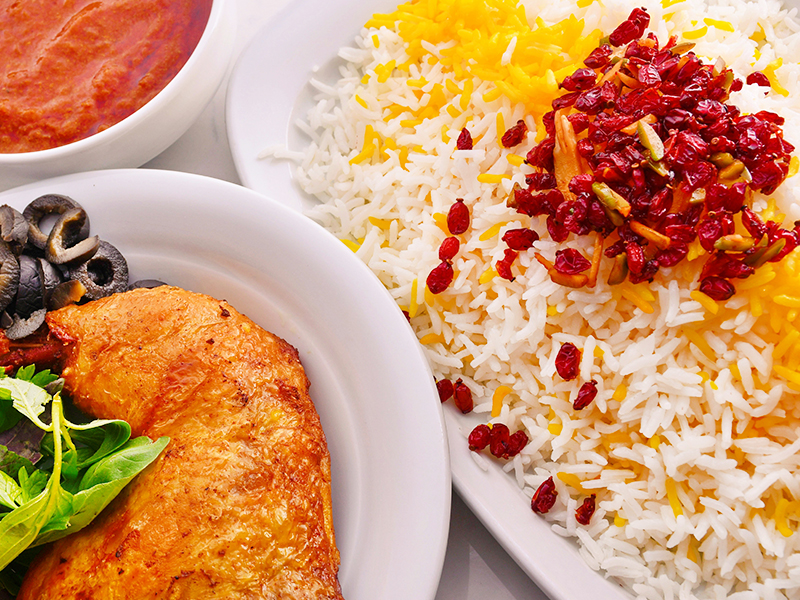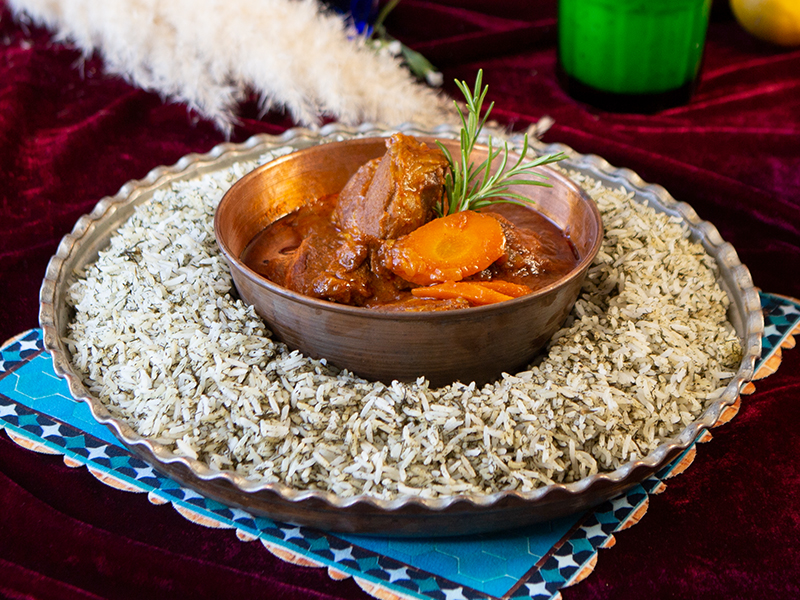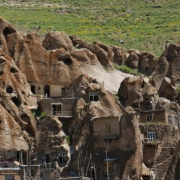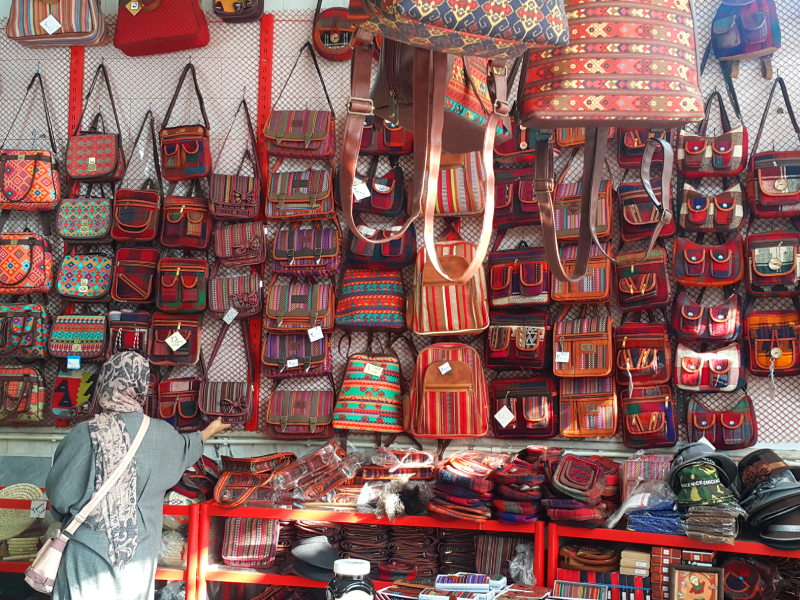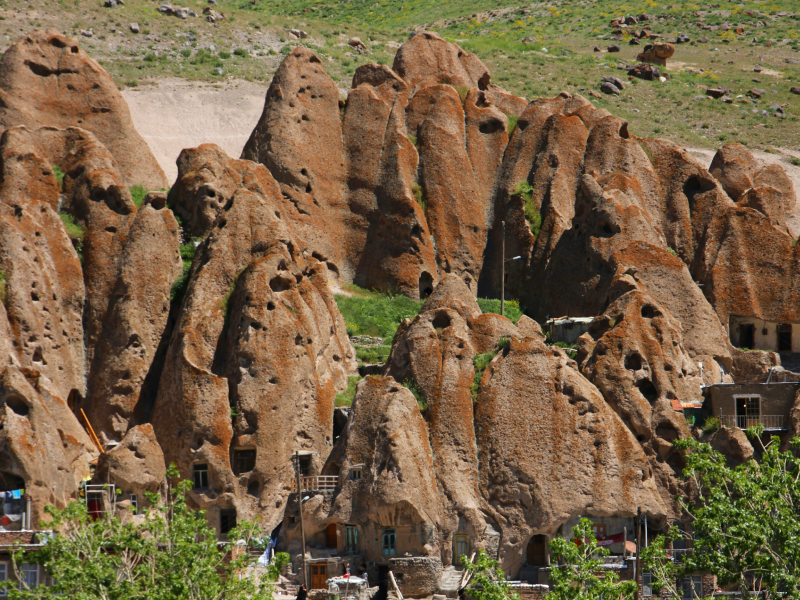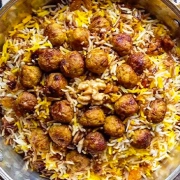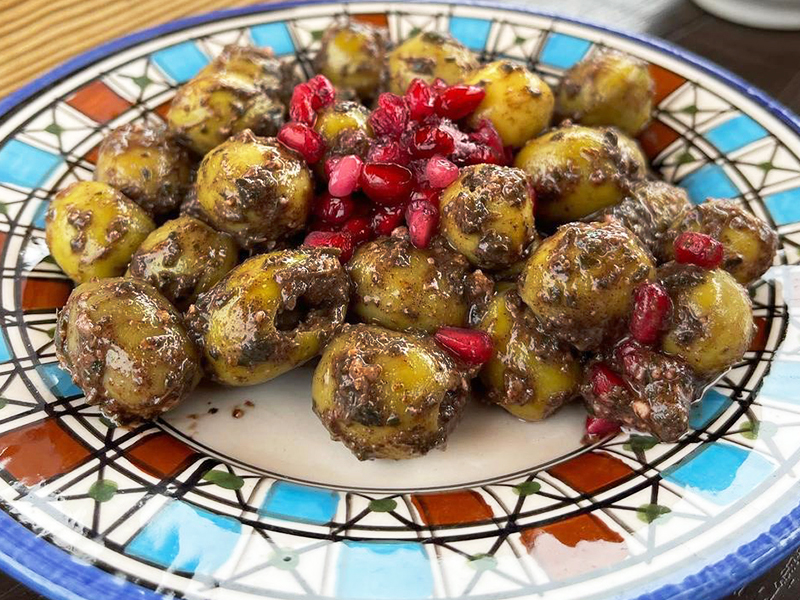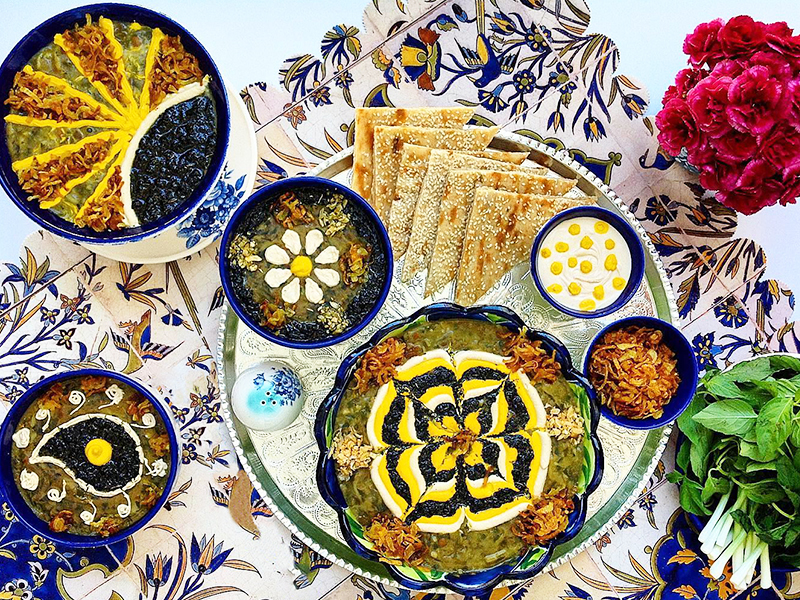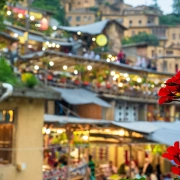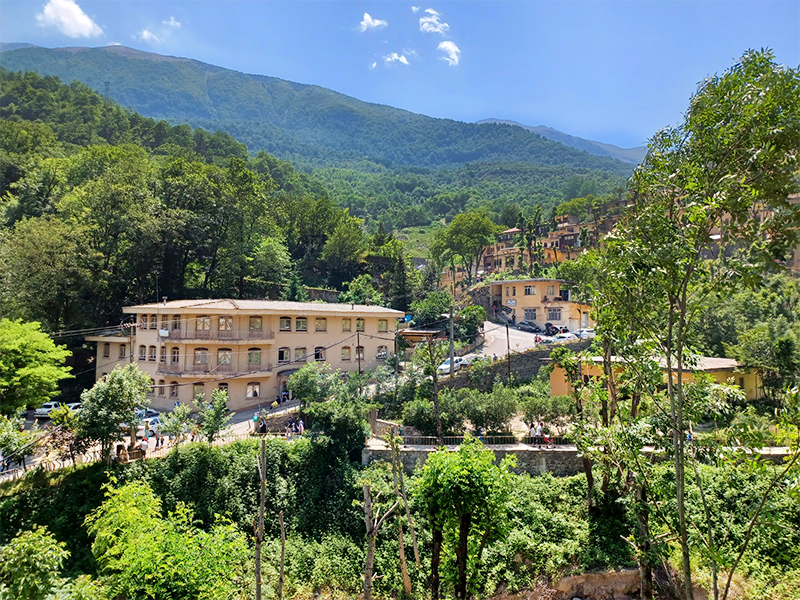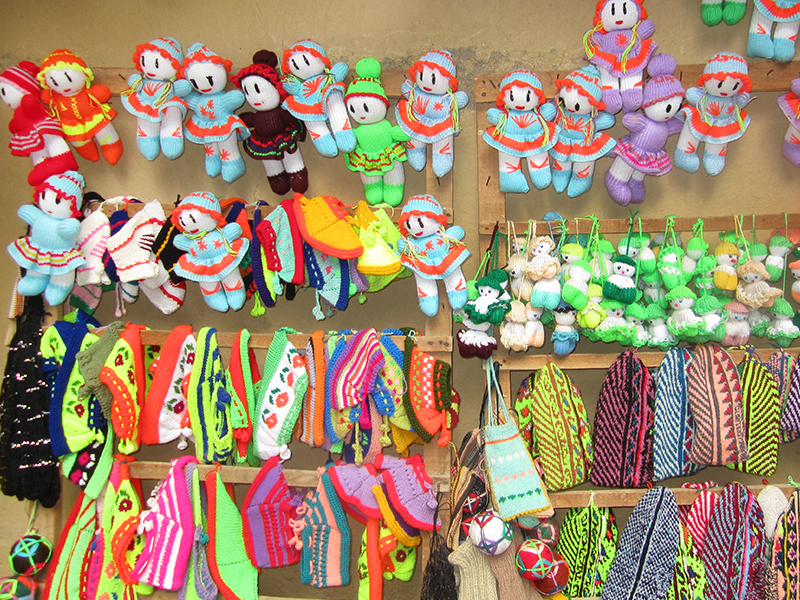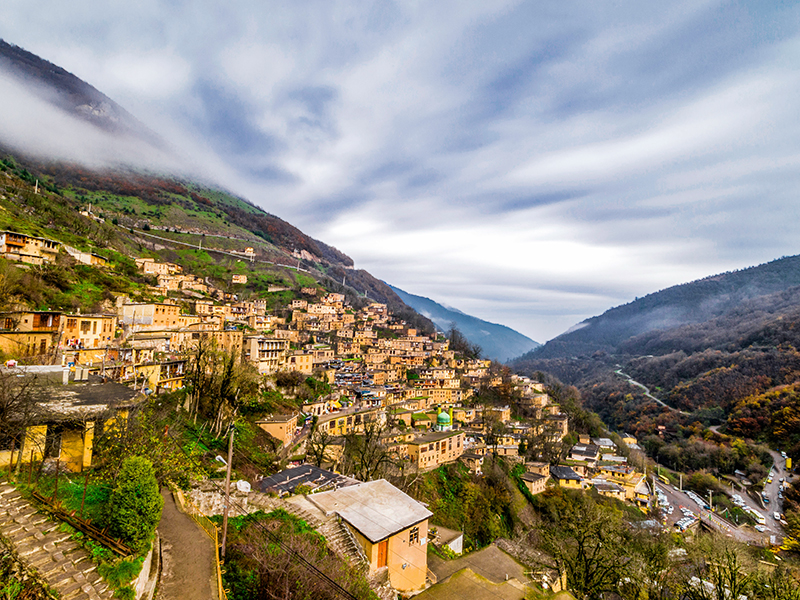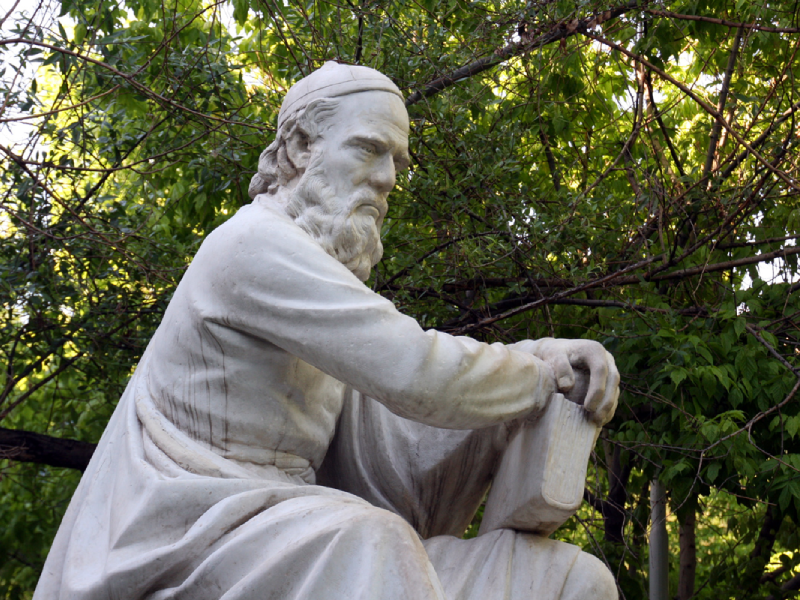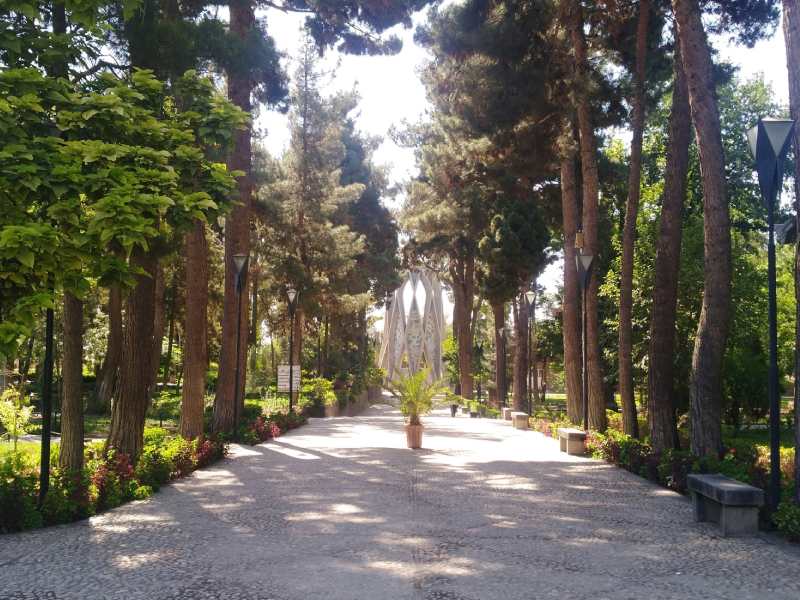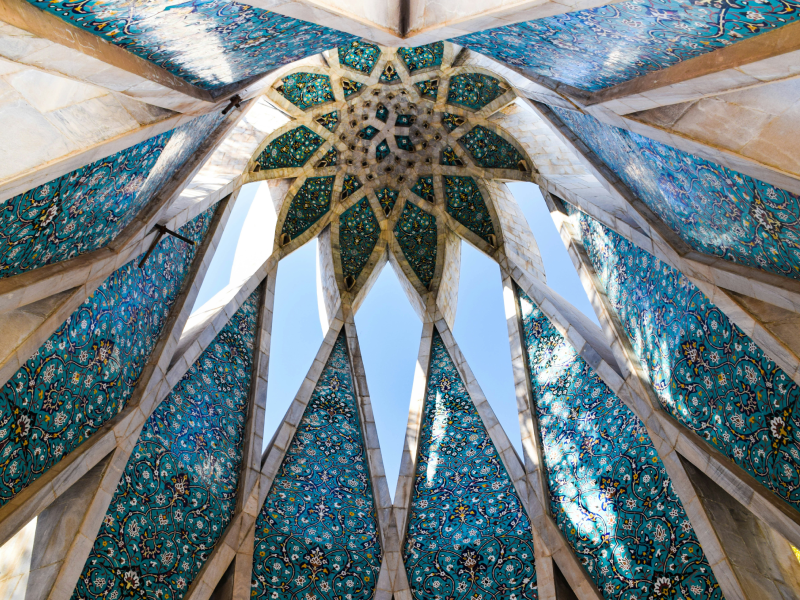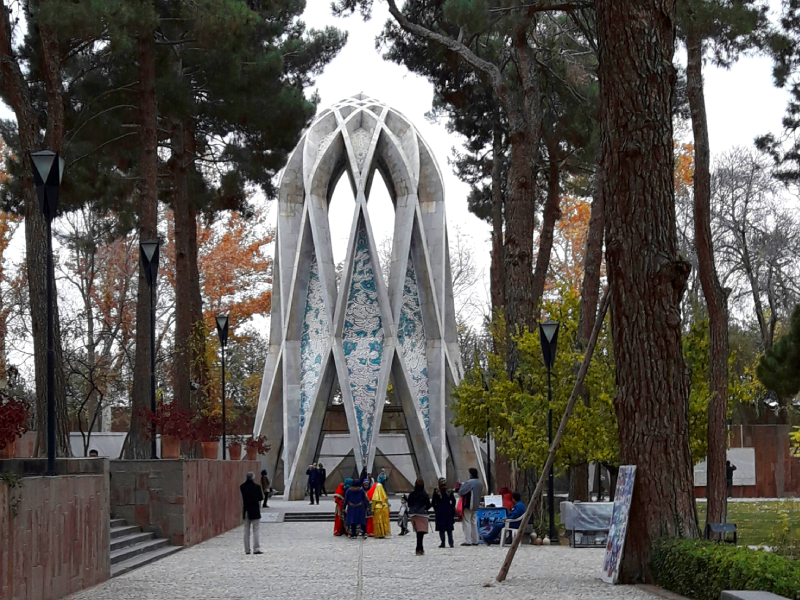Iran, a place of mesmerizing diversity, has a rich tapestry of natural and cultural wonders that attract visitors from all over the world. Nestled in the center of the Middle East, this lovely country has a plethora of tourist destinations that are as different as they are beautiful. Tehran, Yazd, Kashan, Mashhad, Kerman, Shiraz, Isfahan, and Qeshm Island are among the most popular tourist destinations for those who wonder where are the best places to visit in Iran.
These places provide pleasurable experiences for both domestic and international visitors. In this article, we will take a look at some of Iran’s most famous and must-see locations in popular cities. Here are the best places to visit in Iran!
Golestan Palace Complex
The Golestan Palace Complex is a royal palace complex located in Tehran, Iran. This popular attraction is recognized by UNESCO as a World Heritage Site and is one of the important landmarks in the city. Each of the buildings and gardens that make up the complex are representative of distinct periods in Iran’s past.
Another feature that makes the Golestan Complex so fascinating is that it not only bears ample witness to Iran’s historical and architectural legacy but also serves as an excellent laboratory for investigating the life and cultural transformation along with the change of regime. Golestan Complex Tehran Iran, is a popular destination for many travelers.
Milad Tower
Milad Tower is one of the tallest towers in the world, displaying Tehran’s modern architecture. The Milad Tower reaches a height of about 438 meters (1,400 feet). When it was finished in 2007, it was the world’s fourth-tallest tower.
One of the main attractions of Milad Tower is its observation deck, which offers panoramic views of Tehran and its surroundings. At 276 meters (906 feet), this deck is placed to give the visitor breathtaking vistas of the city against clear pink sunsets and purple evenings.
Azadi Tower
The Azadi Tower, also known as Freedom Tower or Borj-e Azadi, is a prominent landmark and a symbol of the city. Azadi Tower was the work of Iranian architect Hossein Amanat and was completed in 1971. It is a blend of modern and traditional climatic features.

Azadi Tower in Tehran
The design of the tower draws on the Achaemenid and Sassanid architectural styles for artistic inspiration; these are true reflections of the rich cultural heritage of Iran. Azadi Tower has long been a symbol for the Iranian people. The word “Azadi” is “freedom” in Persian, and the tower was built to commemorate the 2,500th anniversary of the Persian Empire.
National Museum of Iran
The National Museum of Iran in Tehran is the largest and most prestigious museum in the world. A wide variety of antiques and artifacts are displayed in this museum. The exhibits at the National Museum of Iran represent various periods of ancient Iranian history, particularly the Achaemenid, Parthian, and Sassanid eras, and showcase the rich history and legacy of the Iranian people.
The main displayed items at the National Museum of Iran include monumental sculptures, reliefs, minor objects in precious metals, and ceramics, illustrating the art, culture, and customs of ancient civilizations of Iran. This museum is a must-see destination for history buffs.
Naqsh-e Jahan Square
Naqsh-e Jahan Square stands as a monument to Isfahan’s architectural splendor and cultural heritage. Naqshe-e Jahan Square is the symbol of Isfahan and is often referred to as Imam Square. It is among the largest plazas ever constructed, surrounded by examples of stunning Persian design.
Visitors gaze upon ornate façades and soaring minarets, marveling at the harmony between grand scale and grace. UNESCO deemed the square worthy of protection for its significance in preserving Iran’s contributions to art and history.
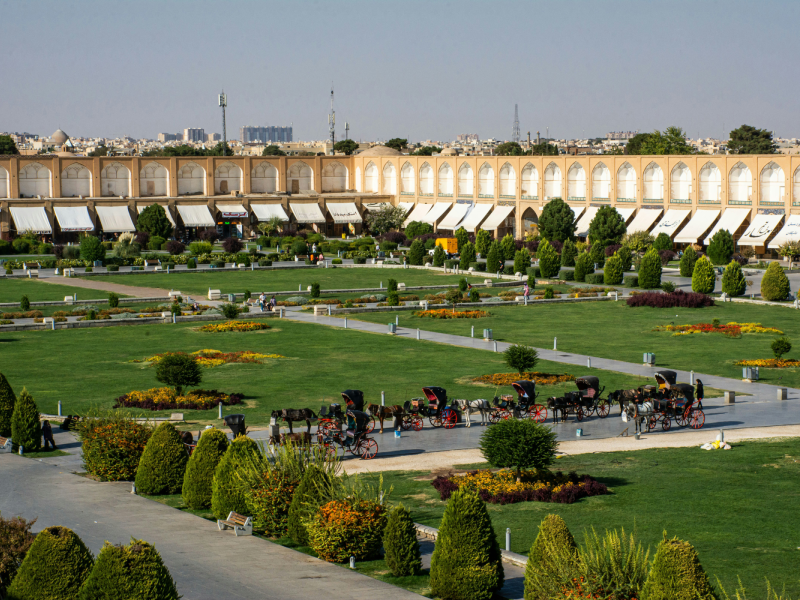
Naqsh e Jahan Square in Isfahan
Any tour of the country would be remiss without pausing in Naqsh-e Jahan Square to appreciate its exquisite beauty and learn from its enduring testament to Persian civilization.
Vank Cathedral
Vank Cathedral, officially called the Holy Savior Cathedral, sits prominently in Isfahan as both a religious site and a cultural landmark of significance. The Armenian church welcomes many visitors with its impressive architecture and intricate designs, serving as one of the finest examples of Armenian spiritual life within the nation.
Housed within the cathedral complex is a museum containing invaluable relics that convey the community’s deep religious devotion and artistic accomplishments through numerous manuscripts, artifacts, and paintings from generations past.
Both the museum and cathedral itself offer insights into the rich cultural heritage of Isfahan’s Armenians, preserving their history for future generations through prime artifacts from Iran’s Armenian population.
Si O Se Pol Isfahan
Si O Se Pol, also known as the Allahverdi Khan Bridge, is a magnificent double-deck bridge that spans across the flowing Zayandeh River in Isfahan. Constructed during the 17th century under the supervision of famed architect Allahverdi Khan, it exhibits exemplary Persian architectural mastery through its blending of functionality and aesthetic beauty, which makes it one of the best places to visit in Iran.
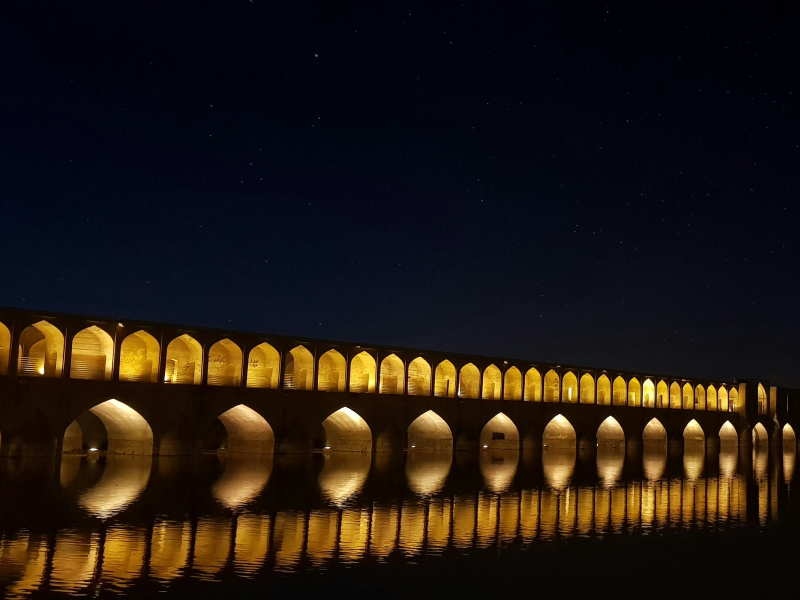
Sio Se Pol Bridge in Isfahan
The bridge stretches approximately 297 meters in its crossing of the river, supported by an impressive series of 33 interconnected arches carved with intricate details. These elegant arches provide sturdy stability to the bridge’s twin decks while creating a spectacular visual effect.
Amir Chakhmaq Complex
The Amir Chakhmaq Complex in Yazd is an architectural masterpiece with a history dating back to the 15th century. It consists of several structures and features that have an important cultural significance to the Yazdi people. The complex is situated around a large public square known as Amir Chakhmaq Square, a location where people gather every day to enjoy their evenings.
Moreover, the complex combines religious, social, and commercial elements and offers a glimpse into the vibrant history and traditions of Yazd city. The Amir Chakhmaq Complex continues to be an important cultural site and a popular destination for tourists and locals alike.
DowlatAbad Garden
Yazd’s DowlatAbad Garden is another beautiful attraction of this city. It is a garden that has been designed in the Persian traditional design. The Dowlat-Abad Garden is famous for its symmetry and attention to detail. With its segmented parts and water elements, the garden exemplifies the concept of “Chahar Bagh” (four-fold garden).
The rich vegetation, bright flowers, and tall cypress trees covering the garden present a peaceful and attractive environment for those who are seeking peace. The garden is centered on a large rectangular pool, clearly reflecting the beauty of the trees, flowers, and mansion all around it. This all make this garden one of the top places to visit in Iran.
Arg-e Bam (Bam Citadel)
Bam Citadel can date back to over 2,000 years ago. Believed to have been built during the Parthian Empire (3rd century BC) and later expanded in the Sassanian period (3rd to 7th century AD), this city served as a strategic trade and defense center in its region. Bam was located along the ancient Silk Road, a main trade route connecting east and west.
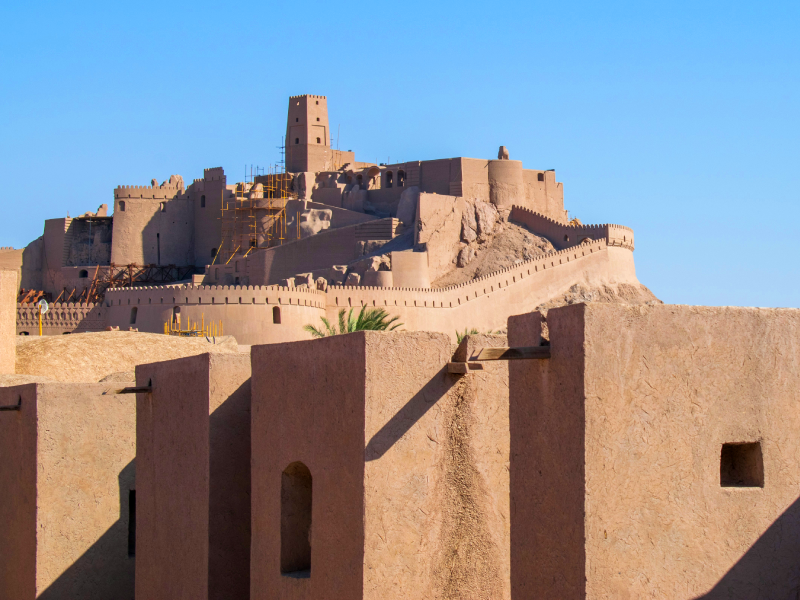
Bam Citadel in Kerman
In addition to being a fortress, the citadel was an urban center with people living there. Residential areas, mosques, schools, public baths, and the bazaar were a part of social and cultural life within the walls of Bam Citadel. Today, the reminiscences of the Bam Citadel have turned this destination into a beautiful tourist attraction.
Imam Reza Holy Shrine
One of the most sacred sites for Muslims around the globe is the Imam Reza Holy Shrine, home to the burial place of Imam Reza, the eighth Imam of Shia Muslims. Visiting this shrine is one of the top things to do in Mashhad. Each year, this holy site in the Iranian city of Mashhad welcomes millions of pilgrims seeking blessings, prayer, and a deeper connection with the revered Imam.
For those journeying from distant lands, the shrine represents an opportunity for spiritual reflection in the presence of the departed Imam. Within its walls lies Imam Reza’s physical remains and the hope of millions who come calling, hoping to feel closeness to someone regarded as an exemplar of Islamic virtue.
Takht-e Jamshīd (Persepolis)
Takht-e Jamshid, commonly referred to as Persepolis, was an ancient ceremonial capital in the mountains near the city of Shiraz. Founded during the reign of Darius the Great, the kingdom reached its peak under successive Achaemenid rulers until its downfall in 330 BC. Renowned for architectural wonders and majestic structures, Persepolis sprawled across 125,000 square meters and housed various palatial complexes, audience halls, private living quarters, and ceremonial spaces, all constructed of stone.
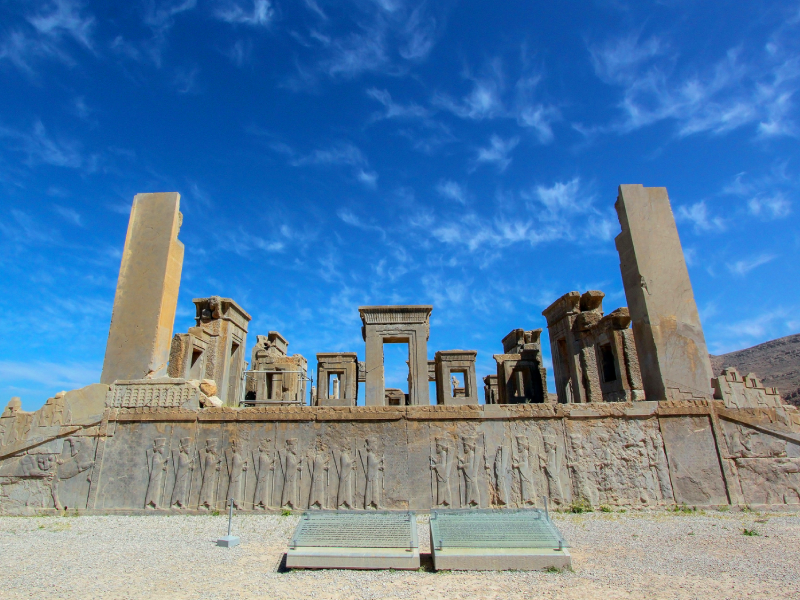
Persepolis or Takht-e Jamshid in Shiraz
Intricately carved reliefs and elaborate decorative elements have adorned the monumental buildings within the extensive complex. While Darius first established Persepolis as an imperial capital, later emperors such as Xerxes and Artaxerxes also greatly expanded the site, leaving behind structures of astonishing scale and sophistication that still impress visitors today with their grandeur, though little remains of their once magnificent splendor.
Eram Garden
Renowned for its picturesque vistas and stunning views, Eram Garden adorns itself with lush greenery, vibrant blooms, and an assortment of trees—among them, towering cypresses reaching for the heavens and fragrant orange trees wafting their scent on the breeze.
Being one of Shiraz’s most celebrated attractions, Eram Garden has established itself as a hub for travelers from near and far. It is one of the best places to visit in Iran. Strategically situated near other notable sites, such as the Tomb of Hafez and the magnificent Nasir al-Mulk Mosque, the garden is easily accessible.
Shah Cheragh Shrine
The Shah Cheragh Shrine is a sacred and important holy place for Shia Muslims around the world. The shrine, which translates as “King of Light,” includes the tombs of two brothers, Ahmad and Muhammad, sons of the seventh Shia Imam, Musa al-Kadhim.
The shrine complex consists of multiple structures and courtyards and is of immense cultural, architectural, and religious significance. The Shah-e-Cheragh Shrine is one of Iran’s holiest Shia pilgrimage locations that attracts lots of visitors yearly.
Vakil Complex
The Vakil Complex is a historical complex found in Shiraz, Iran. It was constructed during the Zand dynasty in the 18th century and stands as a tribute to the architectural and cultural achievements of the time.
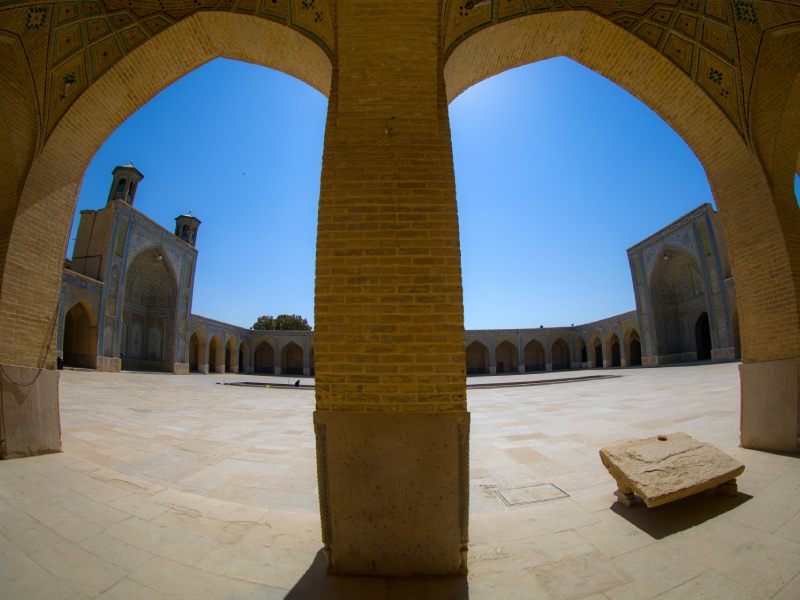
Vakil Mosque in Shiraz
The complex includes several important structures, such as the Vakil Mosque, Vakil Bazaar, and Vakil Bath.
Kooh Sangi Park, Mashhad
Kooh Sangi Park’s far-off location from Mashhad is filled with a landscape of mountains and hills. The park is quite large and provides a serene and natural environment for its visitors. With its incomparable natural beauty and panoramic settings, Kooh Sangi Park is a perfect place for photography and is a very popular destination. During a visit to the park, there are gorgeous sites, nature scenes, and keepsakes of memorable experiences.
Valley of Stars, Qeshm
One of the best places to visit in Iran is the Valley of Stars on Qeshm Island. Qeshm Island is located just off the southern coast of Iran and is the biggest island in the Persian Gulf. The Valley of Stars on Qeshm Island is a famous tourist destination and one of the top things to do on Qeshm Island. The scenery is amazing and odd in Star Valley. The tall granite formations that have inspired such reactions, together with their unique patterns and textures, create a kind of “surreal” atmosphere. The valley’s strange beauty also comes from the combination of the sun’s rays and shadows.
Hengam Island, Qeshm
Situated not far from Qeshm Island, Hengam Island is a small but magnificent holiday island. Hengam Island offers the special opportunity to see dolphins in the deep sea.
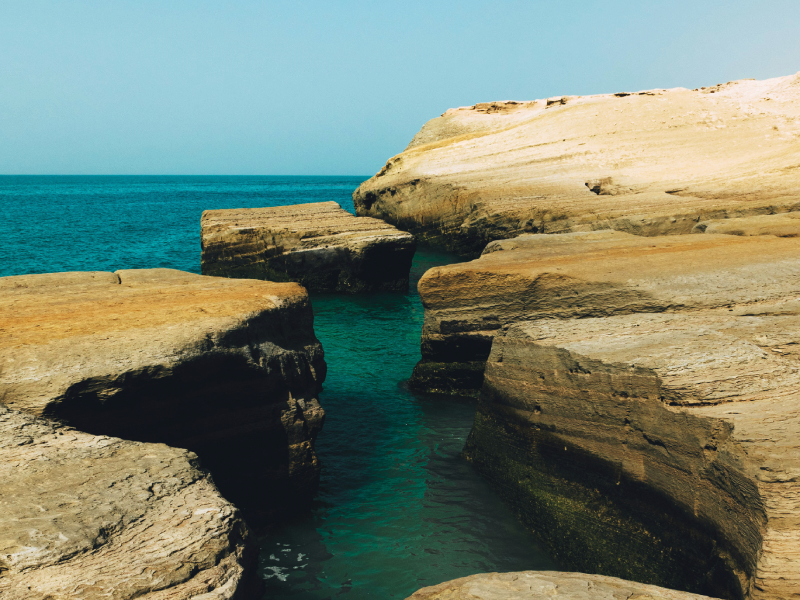
Hengam Island in Iran
The sea around Hengam is home to a large community of Indo-Pacific bottlenose dolphins. Hengam Island has mangrove forests as well, like those found on Qeshm Island. Don’t forget to visit Hengam Island Qeshm for a lovely experience near the Persian Gulf.
Hormuz Island
Known as Hormuz or Jazireh-ye Hormoz in Persian, Iran’s Hormuz Island is a mere dot on the map, yet this insignificant point has both cultural and geological significance. In the long history of Hormuz Island, there are many stories.
It was an important port for trade and commerce in medieval times and the single major port for the maritime trade between the Indian Ocean and the Persian Gulf. Located adjacent to the Qeshm Salt Domes, Hormuz Island is another geological wonder.
Shazdeh Mahan Garden
The magnificent Persian garden Prince Mahan Garden, or Shazdeh Mahan Garden, is situated in Mahan City, within Iran’s Kerman province. It is one of the best places to visit in Iran. Shazdeh Mahan Garden was constructed in the 19th century during the Qajar dynasty. Mohammad Hasan Khan Qajar, the region’s governor, commissioned it as a private garden and dwelling for his son.
The garden is an example of the architectural style of that period. A standout feature of Shazdeh Mahan Garden is its terraced layout. This garden is situated on a highly inclined plain, leading visitors from the entrance to the highest point of the garden by a series of stepped terraces.
Shahdad Desert
Shahdad Desert is a vast and mesmerizing desert. Shahdad desert is the hottest location on earth, which is situated within the Lut desert of Iran in Kerman. Shahdad desert is the ideal destination for experiencing off-road traveling with 4WD cars, and it offers scenic views for photographers and nature lovers.
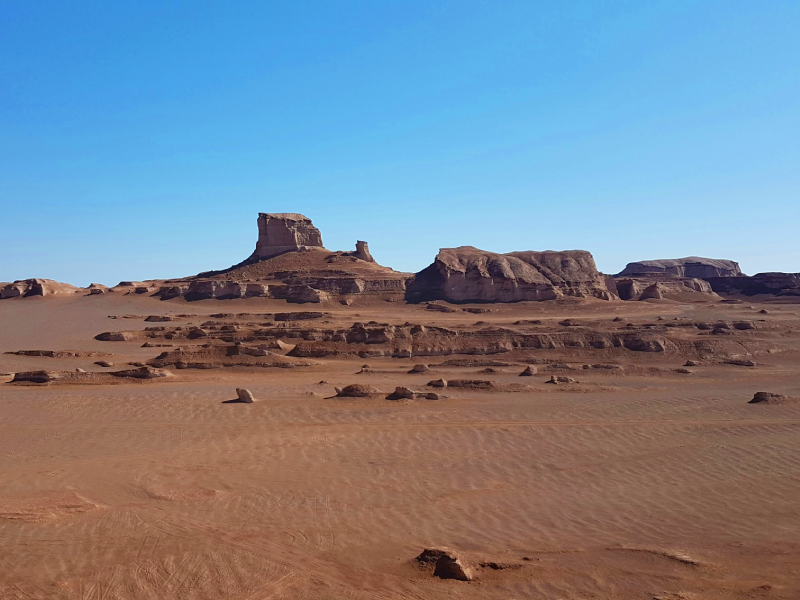
Kalut Shahdad Desert
Shahdad desert is divided into three sections: Green Section, Orange, and Red Section. Red and Orange sections are prohibited and is recommended to visit these sections with a tour guide.
Tabatabei House, Kashan
One of the best places to visit in Iran is Tabatabaei House, a public mansion situated in Kashan City. This house is one of the most outstanding examples of classic Persian residential architecture. It is famous for its exquisite design elements and elaborate decorations.
The great thing about the Tabatabae is its large courtyard, as well as its garden. In the center of the courtyard, there is a beautiful fountain which completes the beauty of this mansion. Tabatabaei House has undergone many restorations to maintain its authentic beauty and architectural integrity. Today, Tabatabaei House is one of the popular attractions of Kashan.
Fin Garden Kashan
Fin Garden of Kashan is a must-go destination for tourists and travelers alike. The design of Fin Garden follows conventional Persian garden principles, such as symmetry, water features, and harmonizing with nature.
There are four quadrants in the garden, and each has its special attributes and functions. In fact, Fin Garden is noted for its magnificent and ancient cypress trees, some of which could be over 400 years old.
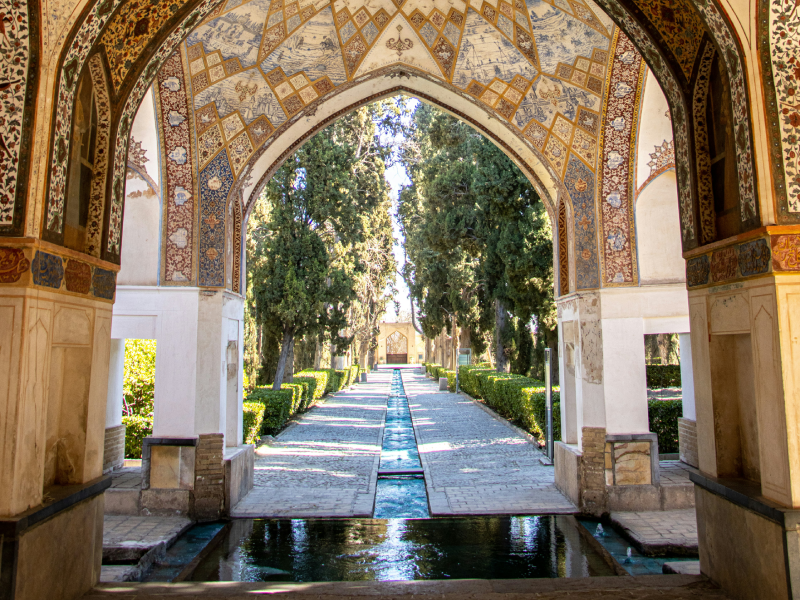
Fin Garden in Kashan
The tall and slender cypress trees add height and grace to the garden area. There are walkways to guide visitors through the garden. Moreover, the garden has seats for resting comfortably in the shade.
Borujerdi House, Kashan
Another historical mansion of Kashan is the Borujerdi House, also known as Khaneh Borujerdi, one of the best places to visit in Iran. The mansion incorporates traditional windcatchers, known as “badgirs,” which are architectural elements designed to harness natural ventilation and cooling.
Borujerdi House is a great example of Persian-Islamic design. Borujerdi House is characterized by a symmetrical layout and it carries a historical and cultural significance for Iranian people.
If you are interested in Iranian old designs and want to learn more about the history of this country through its design elements, Borujerdi house is a must-visit attraction in Kashan.
Final Words
Iran is renowned for having diverse, captivating attractions that draw visitors from every part of the world. This enchanting land presents a variety of tourist destinations, every one of them as beautiful as the next. Among the favorites are Tehran, Yazd, Kashan, Mashhad, Kerman, Shiraz, Isfahan, and Qeshm Island.
If you ever come to visit Iran and want to discover the stunning destinations this country has to offer, make sure not to miss out on the mentioned attractions.
Are you planning to travel to Iran? Check out our Iran tours.

